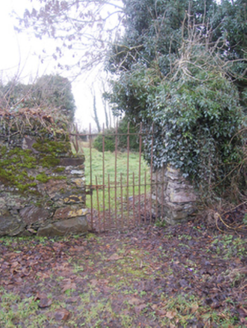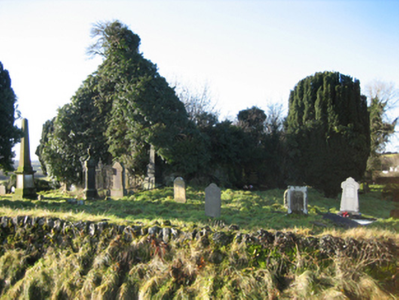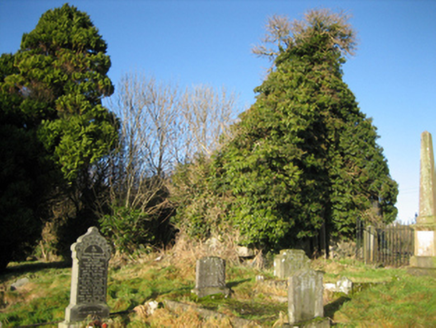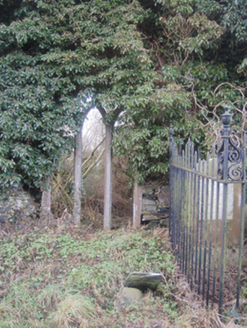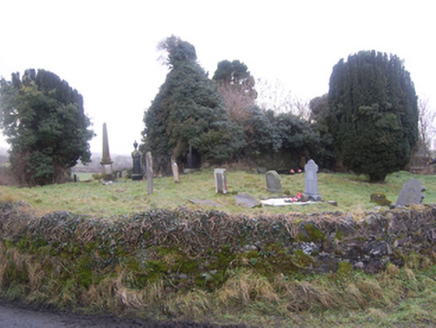Survey Data
Reg No
40827009
Rating
Regional
Categories of Special Interest
Archaeological, Architectural, Artistic, Social
Original Use
Graveyard/cemetery
Date
1500 - 1730
Coordinates
224220, 411060
Date Recorded
12/01/2011
Date Updated
--/--/--
Description
Remains of former Church of Ireland church, built c. 1500 and altered c. 1609, 1622 and c. 1720, comprising small ruinous and overgrown four-bay hall (on rectangular-plan). Formerly with pitched roof, now collapsed. Constructed of rubble stone or slate masonry with flush quoins to the surviving corners. South elevation and south-west corner now largely collapsed. Round-headed window opening to the east gable end having three-light opening with cut stone intersecting or switchline cut stone tracery. Four window openings to the north elevation with remains of cut stone dressings. Pointed-arched doorway to the west elevation having punched chamfered cut stone surround with interior rebate for door. Graveyard (on sub rectangular-plan) to site having collection of mainly nineteenth and twentieth century gravemarkers (mainly upstanding, some recumbent) and a number illegible gravemarkers of indeterminate date. Wrought-iron railed enclosures to some gravemarkers. Timber gravemarkers to site. Surrounded by rubble stone boundary wall with rubble stone coping over. Pedestrian gateway to the north having a pair of rubble stone gate piers and wrought-iron gate. Three medieval window fragments from church (see RMP DG054-032002-) built into the inner face of gate piers. Located at a corner site in the rural countryside to the south-east of Manorcunningham.
Appraisal
This interesting site is mainly of archaeological interest due to the ruins of an early church, built c. 1500, and altered around c. 1609 and\or c. 1622 to accommodate new use as a Church of Ireland church following the Plantation of Ulster. The Royal Commission indicates that the medieval parish church was significantly altered when converted for protestant worship c. 1622. It continued in use as the parish church until 1792 when a new church was built at Manorcunningham (see 40827003) to the north. Of particular interest is the survival of the very fine ‘Planter’s Gothic’ window to the east gable with cut stone intersecting tracery set in a round-headed opening. A number of earlier fragments of medieval tracery survive to site including three window fragments (see RMP DG054-032002-) built into the inner face of one of the gate piers to the north. The graveyard remained in use longer after the deconsecration of the church (presumably in or shortly after 1792) and contains an interesting collection of mainly upstanding gravemarkers of nineteenth and twentieth century date, some in metal railed enclosures, and some of modest artistic merit, including a number of obelisk and classical gravemarkers. The earliest legible marker is dated 5th March 1798 and commemorates Robyn Wilson although some of the illegible markers may be earlier. Interestingly, a number of timber gravemarkers still survive, albeit in an increasingly precarious condition. The graveyard may to have been multi denominational as there is a marker commemorating the Revd. Robert McMorris of the First Ray Presbyterian Church (died 1903). This site is an interesting feature in the rural landscape to the south of Manorcunningham, and is an integral element of the built heritage, archaeology, and social history of the local area. The simple rubble stone boundary wall (possibly from c. 1860) and the simple gateway to site add to the setting and context.
